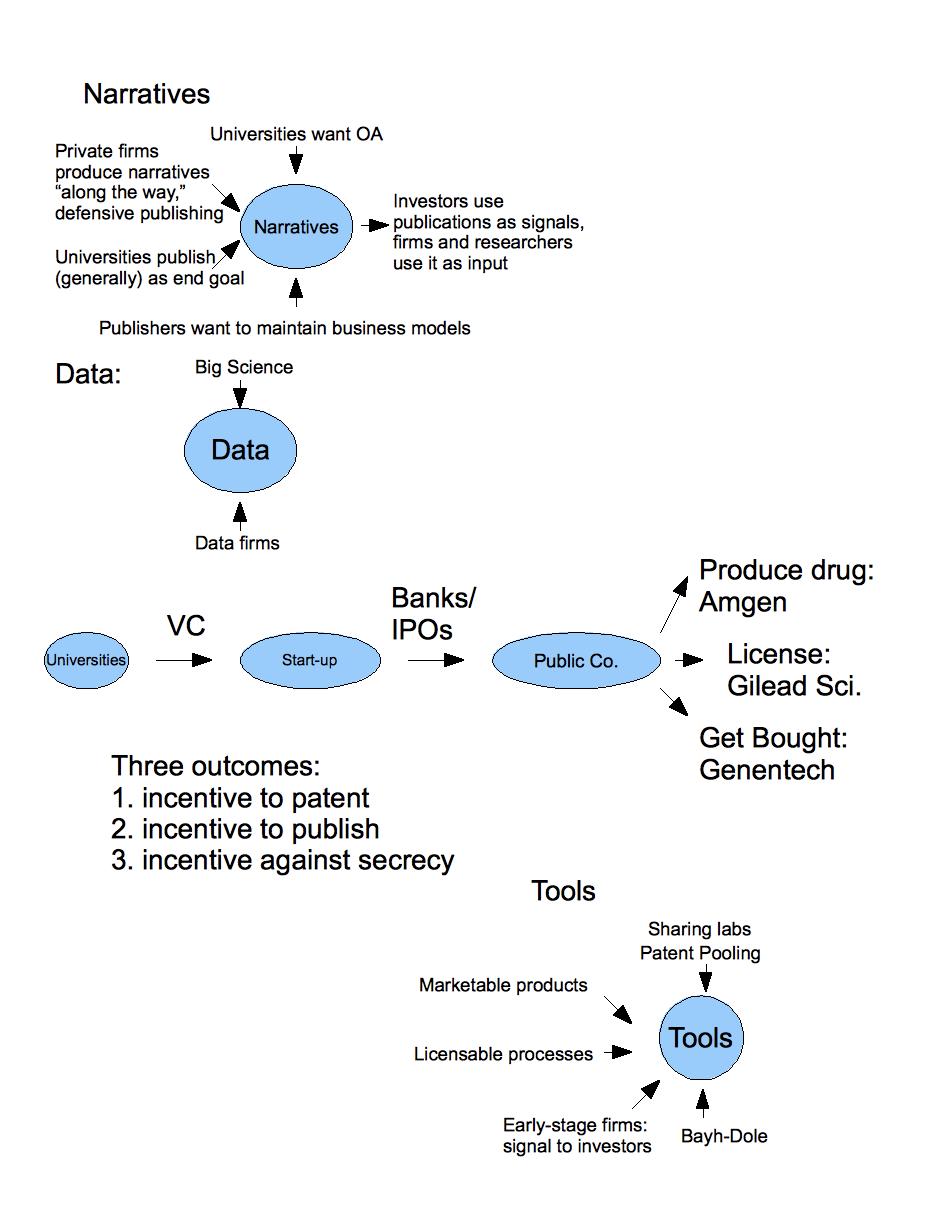Biotechnology - Genomic and Proteomics
Field definition
Basic Definition
Simply defined, biotechnology is any technology that relies on living organisms or biological systems. By this definition, human beings have been using biotechnology for thousands of years to produce food products, textiles and other necessary items. Several familiar items -- including yeast-rising bread, yogurt, cheese, wine, beer and vinegar -- are all produced with the help of cultured microorganisms.
In recent years, however, the term "biotechnology" has come to mean the use of genetic engineering and its associated techniques. This more common definition is found in a variety of applications, from medicine to agriculture.
Human genomics is of critical importance to health and welfare, used by firms as the foundation for innovation in many applications, from enviromental and medical to industrial and agriculture products.
The US biotechnology industry includes about 1,000 companies, with combined annual revenue close to $50 billion. Large companies include Amgen, Monsanto, Genentech, and Biogen. The biotechnology and the pharmaceutical industries overlap considerably, since many drugs are now developed using biotechnology. The industry consists of a few very large companies and many very small ones, and is fragmented by type of product. Most companies have annual sales under $50 million.
Industry overview here: Biotechnology Industry Organization
Key Industry Statistics
Key Industry Figures 2008
- Industry Revenue: 85,695.4$Mil
- Revenue Growth: 12.9%
- Industry Gross Product: 58,539.2 $Mil
- Number of Establishments: 6,815 Units
- Number of Enterprises: 6,480 Units
- Employment: 341,000 Units
- Exports: 7,251$Mil
- Imports: 2,954.7$Mil
- Total Wages: *20,630.9$Mil
Source: Ibis World
Focus Market Segments
Genomics is the study of the genomes of organisms. The field includes intensive efforts to determine the entire DNA sequence of organisms and fine-scale genetic mapping efforts. The field also includes studies of intragenomic phenomena and other interactions between loci and alleles within the genome and the techniques of sequencing, genome mapping, data storage, and bioinformatic analyses. The wide range of genomics outputs means that the entire range of intellectual property rights come into play at some point in the cycle. Roughly speaking we can divide the knowledge products into narratives, data, and inventions, and use these as a tool to divide up the field for our case study.
From initial R&D to the moment when a target product is developed for licensing to Pharmaceutical or Agricultural companies, we will study the following:
- Data production: Genomic or proteomic sequences
- Narrative production: Journals focused on biotechnology and related disciplines; publications of data; descriptions of tools or patents, or commentaries on them
- Tool production: processes for producing data or physical products
Deprioritized Market Segments
Tools such as software for biotechnology (bio-informatics) and other biological tools not genetically modified.
Excluded From Field Definition
We will not study data, process, or tool production once a target product is licensed to pharmaceutical or agricultural products
Study of the field
Analysis of the field with basis on Field Research Methodology
- Overview of Economics of Intellectual Property in BGP
- Give an overall picture of the BGP field
- Outputs and Products of the field: data, narratives and tools produced by the BGP field
- Legal tools available for and in use by the actors of BGP field: IP in BGP
- competitive advantages in BGP
- IP Profile of Biggest for-profit companies in BGP
- IP Profile of non-profit companies in BGP
- IP Profile of Universities working in BGP
- IP Profile of Associations in BGP
- Commons based cases in BGP
- Peer-Production Business models in BGP
- Open Business models in BGP
Special Cases in BGP
Under this section we will explore possible special case studies that will be later trasformed in papers under BGP Field Intellectual Property Profile.
Genomics
Diagnostic Kits
Vaccines
Biotech and Energy
Resources
Bibliography addressing research outline
Bibliography for Item 1 in BGP
Bibliography for Item 2 in BGP
Bibliography for Item 3 in BGP
Bibliography for Item 4 in BGP
Bibliography for Item 5 in BGP
Bibliography for Item 6 in BGP
Bibliography for Item 7 in BGP
Bibliography for Item 8 in BGP
Bibliography for Item 9 in BGP
Bibliography for Item 10 in BGP
Bibliography for Item 11 in BGP
Bibliography for Item 12 in BGP
Distributed Innovation
http://findarticles.com/p/articles/mi_qa3913/is_200309/ai_n9274359/pg_15
Biotech overview
- http://bio.org/news/pressreleases/newsitem.asp?id=2002_0530_02
- http://bio.org/speeches/pubs/er/statistics.asp
History of Biotech
Links
Blogs and news from the BGP field
Interviews
Possible candidates for interviews:
Hal Abelson - MIT Professor. Board of Science Commons and ccLearn
Becky Ward - Executive Director of Systems Biology at Harvard Medical School
Ed Penhoet - Co-founder Chiron Corporation
Regis B. Kelly - Professor, Department of Biochemistry and Biophysics, University of California ad Executive Director of QB3
Lee Flemming - Professor, HBS
